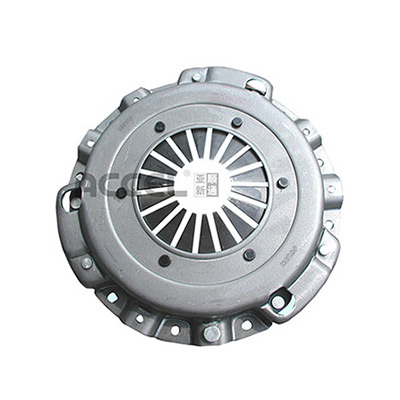- Arabic
- French
- Russian
- Spanish
- Portuguese
- Turkish
- Armenian
- English
- Albanian
- Amharic
- Azerbaijani
- Basque
- Belarusian
- Bengali
- Bosnian
- Bulgarian
- Catalan
- Cebuano
- Corsican
- Croatian
- Czech
- Danish
- Dutch
- Afrikaans
- Esperanto
- Estonian
- Finnish
- Frisian
- Galician
- Georgian
- German
- Greek
- Gujarati
- Haitian Creole
- hausa
- hawaiian
- Hebrew
- Hindi
- Miao
- Hungarian
- Icelandic
- igbo
- Indonesian
- irish
- Italian
- Japanese
- Javanese
- Kannada
- kazakh
- Khmer
- Rwandese
- Korean
- Kurdish
- Kyrgyz
- Lao
- Latin
- Latvian
- Lithuanian
- Luxembourgish
- Macedonian
- Malgashi
- Malay
- Malayalam
- Maltese
- Maori
- Marathi
- Mongolian
- Myanmar
- Nepali
- Norwegian
- Norwegian
- Occitan
- Pashto
- Persian
- Polish
- Punjabi
- Romanian
- Samoan
- Scottish Gaelic
- Serbian
- Sesotho
- Shona
- Sindhi
- Sinhala
- Slovak
- Slovenian
- Somali
- Sundanese
- Swahili
- Swedish
- Tagalog
- Tajik
- Tamil
- Tatar
- Telugu
- Thai
- Turkmen
- Ukrainian
- Urdu
- Uighur
- Uzbek
- Vietnamese
- Welsh
- Bantu
- Yiddish
- Yoruba
- Zulu
12월 . 01, 2024 00:13 Back to list
Comparing Belt and Cylinder Designs for Optimal Performance and Efficiency in Machinery
The Functionality and Efficiency of Belt-Pulley Systems in Cylindrical Applications
Belt-pulley systems are integral to a variety of industrial and mechanical applications, particularly in configurations involving cylinders. Understanding the dynamics of these systems can significantly enhance performance, efficiency, and reliability in machinery that utilizes rotary motion. In this article, we will explore the principles behind belt-pulley systems, their advantages, and the potential challenges they may encounter when interacting with cylindrical components.
Overview of Belt-Pulley Systems
A belt-pulley system consists of a flexible belt that transmits motion between rotating pulleys. The pulleys, often cylindrical in shape, serve as the primary means of transferring power from one component to another. The belt, typically made from rubber or other flexible materials, wraps around the pulleys, creating friction that allows the rotation of one pulley to drive the other. This system is widely used in automotive engines, conveyor systems, and various types of machinery.
Advantages of Belt-Pulley Systems
1. Efficiency in Power Transmission One of the standout features of belt-pulley systems is their ability to efficiently transmit power over a distance. The flexibility of the belt allows for energy transfer at various angles and elevations, making it ideal for complex machinery layouts.
2. Reduced Vibrations Compared to gears, belt-pulley systems tend to produce less vibration and noise. This is due to the cushioning effect of the belt, which helps absorb shocks and reduces wear on components, thereby extending the lifespan of machinery.
3. Low Maintenance Needs Belt-pulley systems require minimal maintenance. Unlike mechanical gears, which may require regular lubrication and alignment, belts can function effectively with simple inspections and replacements when needed.
4. Variety of Applications The versatility of these systems makes them suitable for various applications, from light-duty tasks in small machinery to heavy-duty operations in industrial settings. This makes them a preferred choice in many engineering designs.
belt poly v cylinder

Challenges in Belt-Pulley Systems with Cylinders
While belt-pulley systems offer distinct advantages, they are not without challenges, especially when interfacing with cylindrical components.
1. Slippage One of the main issues encountered in belt-pulley systems is slippage, especially under high loads or incorrect tension. If the belt does not maintain sufficient friction against the pulley surface, it can lead to inefficient power transmission and increased wear of the belt.
2. Wear and Tear Belts are prone to fatigue and can degrade over time due to environmental factors such as temperature, humidity, and exposure to chemicals. Regular monitoring and timely replacement are essential to prevent total system failure.
3. Alignment Issues Proper alignment of pulleys is crucial for optimal performance. Misalignment can cause uneven wear, excessive vibrations, and ultimately failure of the system. Careful design and installation are key to avoiding these pitfalls.
4. Load Capacity Every belt-pulley system has a finite load capacity. Exceeding this limit can lead to catastrophic failures, including belt breakage and pulley damage. Engineers must calculate the expected loads accurately and design systems that can accommodate them safely.
Conclusion
Belt-pulley systems are vital components in modern machinery, especially when integrated with cylindrical applications. Their efficiency, low maintenance needs, and versatility make them a popular choice in various industries. However, understanding their limitations and potential challenges is equally important for ensuring longevity and reliability. By combining knowledge of mechanics with attention to detail in design and maintenance, engineers can optimize belt-pulley systems, thus enhancing overall productivity in numerous applications.
-
Korean Auto Parts Timing Belt 24312-37500 For Hyundai/Kia
NewsMar.07,2025
-
7PK2300 90916-T2024 RIBBED BELT POLY V BELT PK BELT
NewsMar.07,2025
-
Chinese Auto Belt Factory 310-2M-22 For BMW/Mercedes-Benz
NewsMar.07,2025
-
Chinese Auto Belt Factory 310-2M-22 For BMW/Mercedes-Benz
NewsMar.07,2025
-
90916-02660 PK Belt 6PK1680 For Toyota
NewsMar.07,2025
-
drive belt serpentine belt
NewsMar.07,2025

